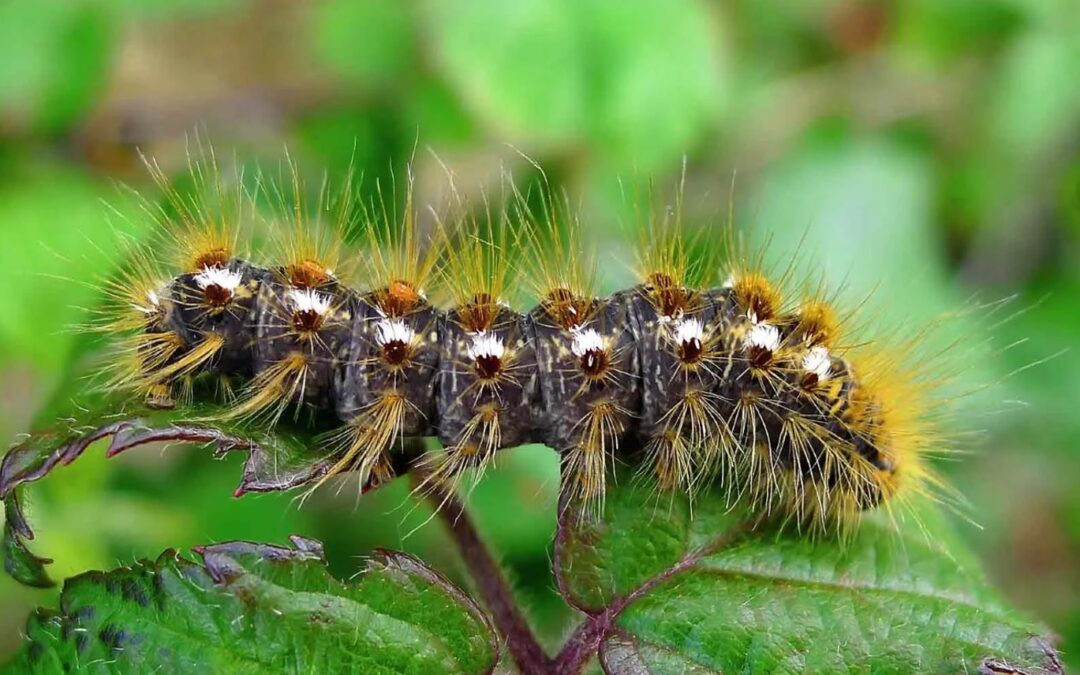There’s a surprising backstory to the latest nasty invasive insect to arrive in New Hampshire, the browntail moth:
We already eradicated it once. But we can’t do it again. At least, we can’t do it again in the same way.
The browntail moth has just been found on the Isle of Shoals, the first time it’s been seen in New Hampshire since around World War II, after a decades-long effort drove it out of the state.
“From 1900 to 1940-ish, this was a big deal in New Hampshire,” said Kyle Lombard, an entomologist/pathologist with the Department of Forests and Lands. “They would hire people to go out and collect those browntail nests – hundreds of guys climbing trees with ladders and snipping these nests out of branches. … Pickup trucks were mounded with these bags of nests that were burned in huge piles.”
It was a very big, very public operation done throughout New England, often via federal programs, especially during the Great Depression. It’s an example of what Lombard told me is called “cultural control” – humans doing physical destruction – rather than chemical control with pesticides or biocontrol with natural predators.
Cultural control of that scale can’t be repeated today because we don’t have such work programs, although the new American Climate Corps shows promise, and we don’t have enough people to do the work, as all the “help wanted” signs demonstrate.
Finally, there’s a lack of enthusiasm for endangering ourselves.
“In the old days there was no real concern for safety. …. Nowadays having 50 people climb 60-foot trees with no ropes is more problematic,” said Lombard in a bit of an understatement.
The browntail moth, which was accidentally brought from Europe to Somerville, Mass., in 1897, is one of many bad bugs that were imported and then got out of control. From drosophila damaging my raspberries to wooly adelgids killing hemlock trees to spotted lanternflies (which will be here soon) threatening grape harvests, the list seems endless.
The browntail moth is different because it bothers people rather than plants. It’s not much of an agricultural pest but if you touch the caterpillars you’ll get a nasty rash. Consider it the insect equivalent of invasive garlic mustard.
There are a couple provisos to this backstory. For one, the browntail moth has a life cycle that makes cultural control feasible, Lombard explained. “They spend the whole winter confined to a nest. If you clip the nest out, the infestation is gone.” That’s not the case with most invasive insects.
For another thing, biocontrol and, to an extent, chemical control were also used.
DDT was not part of any official control effort but it was almost certainly used by individuals or some communities. Back then DDT was the default response to every pest before we noticed how much destruction it was doing to all living things.
As for biocontrol, “it was heavily researched at a time when there was very little oversight. Tons of different biocontrols were dumped onto the browntail moth control effort,” said Lombard. Eventually a fungus and a fly were found to have some effect and are still around today.
But the moth was never completely wiped out. A small population lingered around Casco Bay in Maine for a half century, kept under control until fairly recently by that fungus-and-fly combination, not enough of a problem to be eradicated. Its resurrection is something of a conundrum.
“In the last 10 years it began to re-establish itself – nobody knows why. The weather might have limited the biocontrol a few years in a row and once it gets rolling it’s hard to stop, but we don’t know,” said Lombard.
Cultural control may be put back into effect on the Isle of Shoals, with Maine attacking nests on Appledore Island and New Hampshire on Star Island, before moths are accidentally carried to the mainland. I’m not optimistic, since humans seem incapable of not spreading invasives, but you never know.
In the meantime, I’m not going to pet any caterpillars. Just in case.


 Return to the Concord Monitor
Return to the Concord Monitor
I’m a Maine native and recently returned after 8 years in New Hampshire. Until now “browntail moth” drew a blank stare when I mentioned it in NH. That’s why I feel like I should add that the caterpillars don’t just irritate the skin from touching them. The toxic hairs can be a skin or respiratory irritant from blowing around in the air too. They can linger in the environment for a couple of years and get kicked up by the wind. Just want to make sure that people in the Granite State who are new to this know the full story!